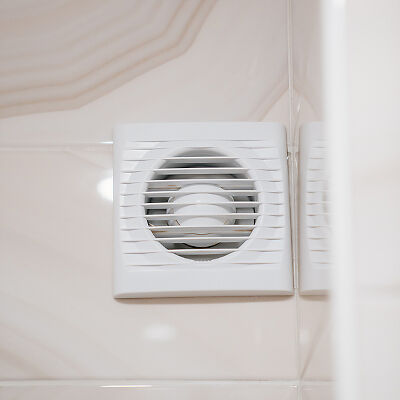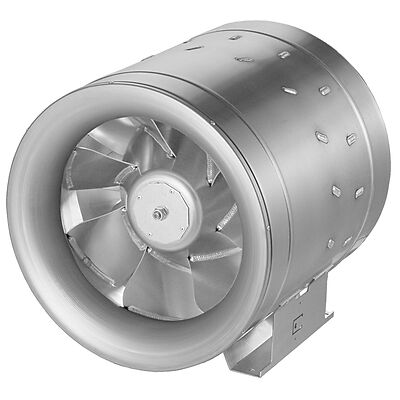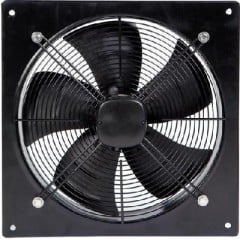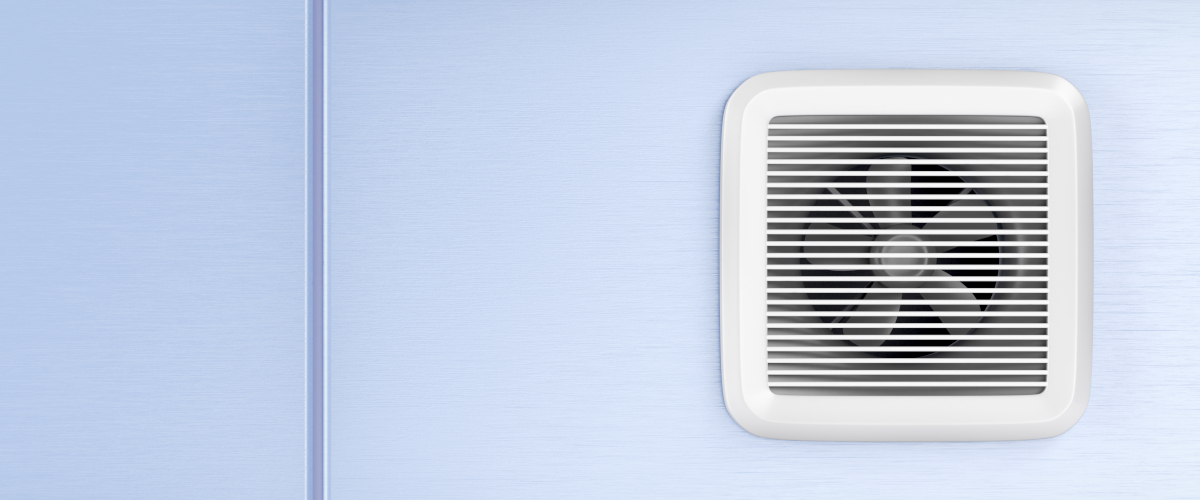
Extractor Fans
Extractor fans are a big part of everyday life. However, they are specialist appliances that can serve wildly different purposes. Whether you're looking for a simple extractor fan for your bathroom or you need a specific size and type for a construction job, you can find it below at the best online price.
Choosing the Right Extractor Fans
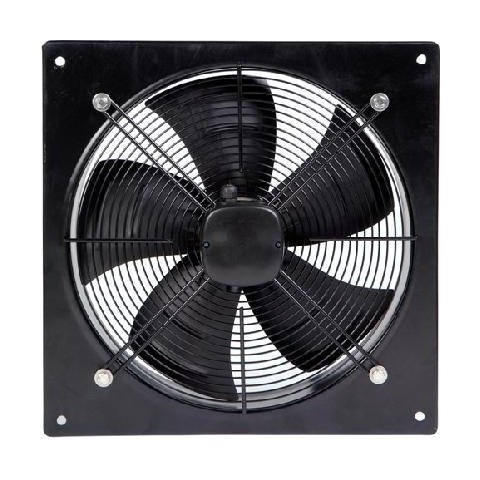 Choosing the right extractor fan can be quite complicated. They’re specialist pieces of equipment that need some expert knowledge to install properly. If you’re looking for an industrial extractor fan, you probably have a specific purpose in mind and you might already have a good idea of what you’re looking for. If that’s the case, you can browse our range of specialist extractor fans above! If you’re not sure what to look for, our buyer’s guide will help put you on the right track.
Choosing the right extractor fan can be quite complicated. They’re specialist pieces of equipment that need some expert knowledge to install properly. If you’re looking for an industrial extractor fan, you probably have a specific purpose in mind and you might already have a good idea of what you’re looking for. If that’s the case, you can browse our range of specialist extractor fans above! If you’re not sure what to look for, our buyer’s guide will help put you on the right track.
What Sort of Room Are You Fitting the Fan In?
Before you start with anything, you need to consider the sort of room you’re fitting the fan in. Is it a bathroom, a kitchen, a factory, or somewhere else? You should also measure the size of the room, both in square metres (m²) and volume (m³). Both of these things determine how big and how powerful you need your extractor fan to be. If you have a large room that contains a lot of chemicals or other fumes (such as a dark room), you’ll need a bigger, more powerful extractor fan to get rid of a lot more air. If you only want an extractor fan for a small home bathroom, you’ll be better off with something smaller.
Working Out Ventilation Rates
Unfortunately, you’ll need to do a bit of maths to work out which extractor fan you need in a room! You need to know how much air a fan is capable of moving before you buy it. If it doesn’t move enough air, it won’t ventilate your room properly. If it moves too much, you’ll end up with a draughty room that gets too hot in summer and too cold in winter.
To work this figure out, you first need to measure the volume of the room in m³ (length x width x height). You then need to consult this table to find out how many air changes per hour you need for that type of room. Times the volume of your room by the required number of air changes per hour, and you’ll be given a final figure of how much air you need your fan to move.
This isn’t the easiest thing to get your head around, so if you’re still not sure what capacity of fan you need, just get in touch! We’ll happily crunch the numbers so you don’t have to!
Fan Size
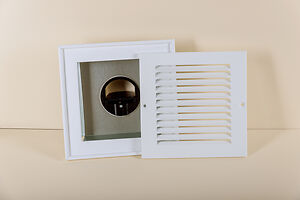 There are two parts to measuring fan size. The first is the size of the plate that the fan is mounted in. This is the bit that actually fixes to your wall, so you need to make sure you actually have the wall space to fit your fan in! The second bit is the diameter of the fan itself, known as the impeller. This goes inside your wall and into the ventilation duct. Usually, the diameter of the impeller is the headline figure, so if you see something advertised as a 4” extractor fan, that refers to the diameter, not the size of the fitting plate. This is an important detail that’s easy to get confused!
There are two parts to measuring fan size. The first is the size of the plate that the fan is mounted in. This is the bit that actually fixes to your wall, so you need to make sure you actually have the wall space to fit your fan in! The second bit is the diameter of the fan itself, known as the impeller. This goes inside your wall and into the ventilation duct. Usually, the diameter of the impeller is the headline figure, so if you see something advertised as a 4” extractor fan, that refers to the diameter, not the size of the fitting plate. This is an important detail that’s easy to get confused!
Magnetic Poles
Bigger fans usually move more air. This means that finding the right fan is usually a balancing act between air change rates and size. Sometimes, this balancing act is just too hard – you might need a larger fan to fit your wall, but only want it to move a small amount of air. In these cases, you’ll need to find a model fitted with “poles”.
These poles are actually magnetic poles. An extractor fan can be fitted with two, four, or six poles (every magnet has two poles) which slow down the fan blades as they spin. This will usually only be an issue in industrial environments, but if you’re looking for a specialist extractor fan it may be something you’ll need to know about.
Fan Speed
The speed of the fan is dictated by how powerful it is and how many poles it has. Along with the size of the fan, its speed helps to determine how much air it can move at once.
IP Ratings
 The ‘IP’ in IP ratings stands for Ingress Protection. These ratings are given to electrical appliances to let you know how well-sealed they are against solid objects, dust, and water (if you want to know more about them, read our guide to IP ratings here). Depending on where you’re installing your extractor fan, this could be a very important feature!
The ‘IP’ in IP ratings stands for Ingress Protection. These ratings are given to electrical appliances to let you know how well-sealed they are against solid objects, dust, and water (if you want to know more about them, read our guide to IP ratings here). Depending on where you’re installing your extractor fan, this could be a very important feature!
If it’s going to be installed in a bathroom or another area that deals with steam, fumes, or chemical vapour, you’ll need some level of ingress protection. For bathroom use, a minimum rating of IPX4 is recommended. If you know it’s going to be installed in an area where there’s a lot of dust, you’ll want an IP64 or 65 rating.
Heatproofing and Other Protection
IP ratings are strictly for measuring how well-sealed a fan is – if you want it to be heatproof or resistant to chemical corrosion, you’ll need a specialist fan with specialist protection (such as ATEX certification, which means it’s protected in explosive atmospheres). Again, this is only usually a concern for very specific industrial purposes – for example, laboratories or welding shops – so think about whether you need this level of protection. If you’re only installing a bathroom extractor fan, you probably don’t!
Running Noise
The problem with noise is that it tends to be directly related to how powerful the fan is, leaving you with an important balancing act to pull off. More powerful fans will almost always be louder, so think about how important fan noise is to you. If you only want something for a small bathroom, you’ll want it to be as quiet as possible. If you need a fan for an industrial environment, then the noise is less important than power.
Bathroom Fan Rules and Regulations
Bathroom extractor fans are easily the most common. They’re so popular these days that many people take them for granted, but if you don’t have one yet, there are a few laws you’ll need to abide by when you get one.
UK Electrical Wiring Regulations
 Bathrooms are divided into four zones. These zones determine how waterproof your extractor fan (or any other electrical appliance you want to install in there) needs to be.
Bathrooms are divided into four zones. These zones determine how waterproof your extractor fan (or any other electrical appliance you want to install in there) needs to be.
Zone 0 covers the area inside your bath or shower. Chances are you won’t be installing a fan here, though!
Zone 1 covers the area directly above your bath or shower up to a height of 2.25m. If you want to put an extractor fan in this zone, you’ll need it to be IP45 rated at a minimum. The alternative is to pick up a SELV (Safety Extra Low Voltage) fan, which runs using just 12V motors. However, SELV fans are often too expensive to be practical.
Zone 2 covers 60cm in all directions from the end of Zone 1. It also covers 60cm in all directions around the bathroom sink. The requirements are exactly the same as Zone 1 when it comes to extractor fans; they need to be IP45 rated or SELV fans.
Zone 3 covers 2.4m across from the end of Zone 2. These areas are deemed safe enough for any extractor fan, so you don’t need to worry about IP ratings.
Even if you’re not fitting your fan yourself, you’ll still need to bear in mind where it’ll be installed in the bathroom before you buy.
Centrifugal Extractor Fans
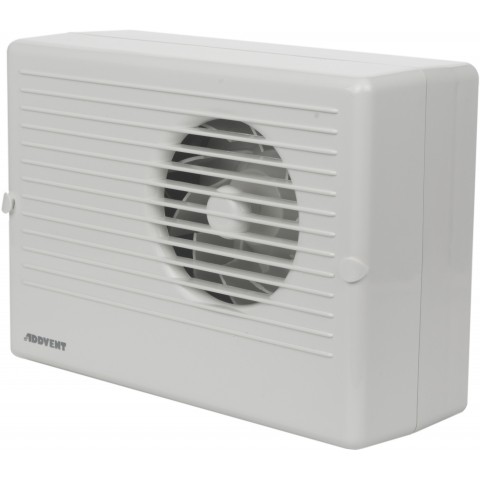 If you’ve spent any time looking around at extractor fans, you’ve probably come across centrifugal fans before. They work by ‘deflecting’ the air at a 90-degree angle within the fan itself which increases the air pressure and, therefore, the power of the fan. They’re better for use in rooms with no natural ventilation, or where long ducts are required to reach the outside of a building. In cases where the air duct is over 10m long, regular extractor fans can struggle to push air the whole way down it, so the extra power of a centrifugal fan is ideal.
If you’ve spent any time looking around at extractor fans, you’ve probably come across centrifugal fans before. They work by ‘deflecting’ the air at a 90-degree angle within the fan itself which increases the air pressure and, therefore, the power of the fan. They’re better for use in rooms with no natural ventilation, or where long ducts are required to reach the outside of a building. In cases where the air duct is over 10m long, regular extractor fans can struggle to push air the whole way down it, so the extra power of a centrifugal fan is ideal.
The cost of this extra power is a much louder noise, so unless you have a room with very poor ventilation or you have very long air ducts in your building, a centrifugal fan might not be the best choice.




